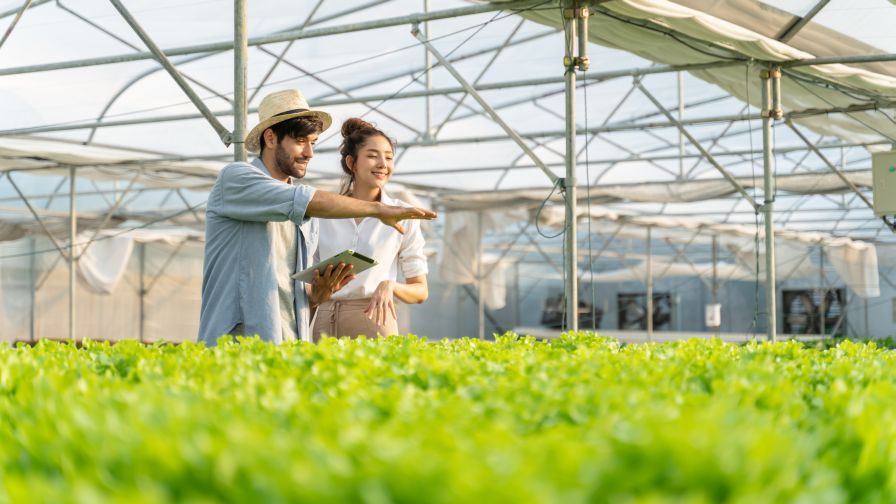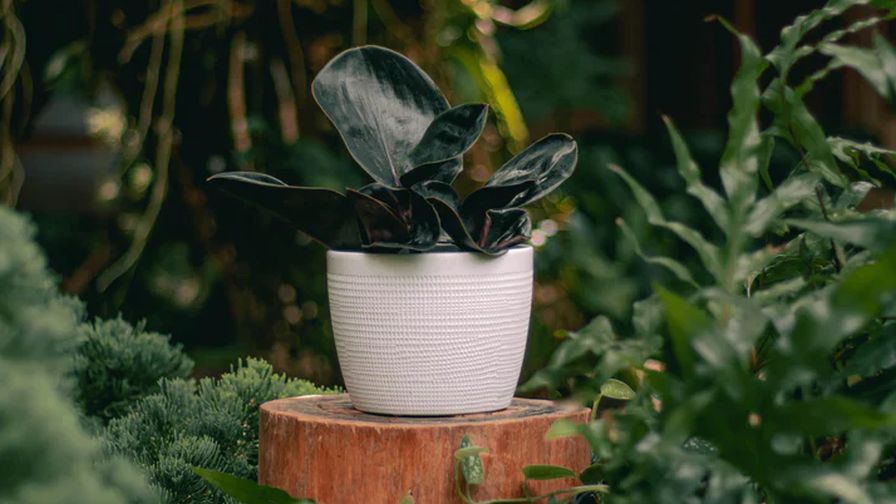Keep Pests Off Your Plants: Four Steps to Stay in Control of Indoor Crops
 While controlled-environment agriculture (CEA) facilities are designed to provide optimal growing conditions without using herbicides and pesticides, indoor farmers face a different set of challenges. The high temperatures and humidity required to grow agriculture indoors often sets the stage for a large number of microorganisms to flourish such as fungi, protozoa, and algae. Worse, according to the FDA, the moist, warm environments in indoor farming operations aid in the growth of bacteria, including pathogens often implicated in foodborne illness outbreaks, such as salmonella.
While controlled-environment agriculture (CEA) facilities are designed to provide optimal growing conditions without using herbicides and pesticides, indoor farmers face a different set of challenges. The high temperatures and humidity required to grow agriculture indoors often sets the stage for a large number of microorganisms to flourish such as fungi, protozoa, and algae. Worse, according to the FDA, the moist, warm environments in indoor farming operations aid in the growth of bacteria, including pathogens often implicated in foodborne illness outbreaks, such as salmonella.
Even if not pathogenic to the plant, many of these microorganisms compete for resources and starve a plant of vital nutrients. Long-term disease prevention and management are critical to help keep these pathogens from affecting crops. However, since most CEA operators are environmentally and socially conscious, it’s important to prioritize safety and sustainability when implementing disease control measures. Doing so will enable you to manage plant health using safe, non-toxic practices in order to continuously yield fresh, healthy crops aligned with your sustainable farming values.
Four considerations to help you stay in control of your indoor crops in an efficient and sustainable manner include:
Operate With the Plant Disease Triangle in Mind
To keep plants vibrant and healthy, it’s important to start with the basics. For plant disease to occur three factors must always be present: a susceptible host plant, a viable pathogen and environmental conditions that are favorable for the pathogen to spread. Known as the plant disease triangle, this concept might seem simple, but it’s the foundation of plant health.
According to the USDA, the most common plant diseases identified by indoor and CEA growers include powdery mildew, Pythium root rot, viruses, and viroids. Since different plants are susceptible to different diseases, the plant disease triangle can help you determine the best growing strategy for your crops. Furthermore, since environmental conditions can easily be manipulated in CEA environments, it’s important to take them into consideration when defining your pest control and cleaning strategies.
Implement Staff Hygiene Rules
Unfortunately, people are a major source of plant contamination. Without proper protocols in place, staff can bring bacteria, viruses, and parasites into farming areas. Human contamination can easily occur via hands, feces, open wounds, clothing, and soiled shoes. Beyond limiting human interaction with plants, providing education, training, and implementing easy-to-follow employee hygiene guidelines is the first line of defense.
Prior to entering the facility, provide a checklist of tasks for staff to complete. Require employees to remove jewelry, change clothing, and wear personal protective equipment (PPE). Provide hair and facial hair coverings, install footbaths to sanitize shoes, and supply foot coverings before entrance into agriculture areas. In addition, require employees to thoroughly wash hands for at least 20 seconds with soap and water before work and after contamination has occurred. Gloves can also offer additional protection from spreading pathogens, but it’s important that they are changed when necessary to avoid contamination. Lastly, always encourage sick staff to stay home.
Clean and Sanitize Surfaces Safely and Sustainably
Routine tool cleaning and surface sanitation are essential to avoid mechanical disease transmission. Dirty tools can quickly contaminate healthy plants and enable disease to spread rapidly. Target areas to clean regularly beyond tools include irrigation lines, trays, pots, troughs, and harvest tables. This prevents pests from being carried over into different areas and helps prevent biofilm, a combination of different microorganisms that bind together and attach to surfaces. If not properly sanitized and eliminated, biofilm can contaminate crops and lead to food safety issues.
While cleaning virtually all production area surfaces on a regular basis may seem like a daunting task, it’s essential to remain in control. Before selecting cleaning and disinfectant products, carefully consider the ingredients with sustainability and food safety in mind. You don’t want to sterilize tools and surfaces at the cost of introducing hazardous cleaning chemicals to your plants, customers, and employees.
Due to the critical, high cleaning demands required in CEA, consider electrochemical activation (ECA) technology. These systems produce cleaning and disinfectant solutions that are 99.9% effective in killing a wide range of bacteria and viruses in seconds using only clean ingredients: salt, water, and electricity. Even better, the systems produce cleaning solutions on-demand, on-site, so farmers never have to worry about running out of cleaning and disinfecting solutions. Look for a system that can produce a food-grade sodium hydroxide cleaner and an EPA-approved food-contact surface sanitizer such as a hypochlorous acid disinfectant. This ensures you won’t jeopardize the safety and quality of your crops.
Consider Plant and Seed Washing
To prevent easily transmissible pathogens such as powdery mildew, some farmers are using a “plant washing” procedure as a preventative measure. They simply spray a fine mist of hypochlorous acid directly onto plants to help reduce and mitigate powdery mildew during the growing cycles. While this process is not an immediate cure, over time specific sites have removed the risk and loss of products with a treatment plan. The best success has been seen with a small droplet, less than 30 microns. The plant is barely wet and oftentimes completely dry after being sprayed.
In addition, seed washing is also important. If not grown in-house, seeds can be a major source of disease transmission. It’s important to mitigate risk by purchasing quality seeds, isolating them, and sanitizing the outer layer correctly before integrating them with established plants in the facility. Treating seeds with hypochlorous acid can effectively remove bacterial pathogens and some viruses from the surfaces of seeds.
Although indoor farming is more controlled, it doesn’t necessarily mean there aren’t challenges. Unfortunately, all plants are susceptible to disease if the exact conditions of the plant disease triangle align. Since the majority of CEA operators are environmental innovators, it’s important to look for more enlightened alternatives for disease management measures, such as eliminating traditional cleaning and disinfecting products that contain harmful chemicals. By implementing a plan that values safe and effective hygiene, sanitation and plant handling measures, CEA growers stop microorganisms from taking control while protecting the health, integrity, and value of their crops.









